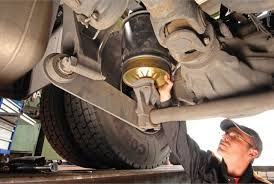Savings From Replacing Shocks On A Preventative Basis
Want to get more life out of a semi or other large truck? Consider replacing shocks on a preventative rather than a corrective maintenance basis.
Worn Shocks
In the world of long-haul trucking, 150,000 miles is a modest distance. Many truckers cover that distance in a year-and-a-half or even less. During that time, a truck’s suspension performs impressive duty. Over that distance, a shock will have stroked 30 million times or more. Although heavy-duty shocks are designed to take a beating, they can get still damaged or wear out prematurely.
Worn shocks increase wheel hop, which increases brake lock-up. Wheel hop is a real concern for another reason. As wheels bounce, the force exerted on the tires rapidly changes. For example, the weight on a tire might vary by a factor of two or three from the top of the bounce to the bottom. Every time this happens, the tire’s footprint changes. Since this may happen dozens of times every minute, the cumulative stress on tire tread is evident.

There are various worn shock indicators:
- Unit leaking hydraulic fluid
- Uneven tire wear
- Physical damage to unit
- Springs require replacement
- Mileage replacement recommendation reached
Consider Preventative Replacement
Ultimately, replacing shocks at the same time as tires is a preventative measure that is cost-effective. In addition to reducing premature tire wear, there are other advantages to replacing shocks on a preventative basis:
- Longer-lasting suspension components
- Reduce stress on air conditioning connections
- Increase chassis component life
- Extend life of electronic components
- Reduced driver fatigue
Some fleets that embrace this preventative concept still set a minimum mileage standard for changing shocks.
Carolina International is a leading source for parts and service in the Southeast. We maintain over 70 service bays at six locations strategically located across South Carolina. For prompt, friendly assistance, please contact us.

